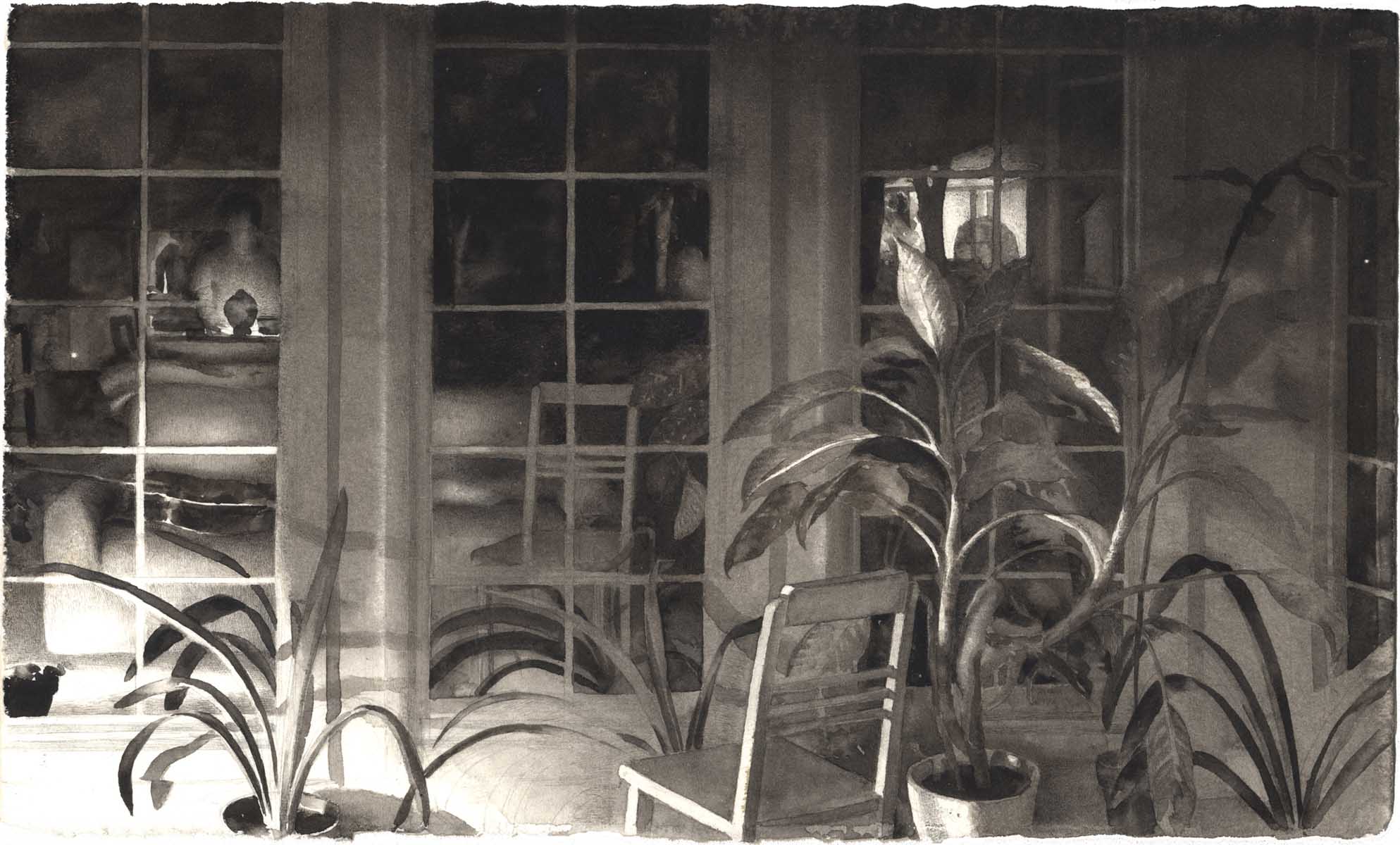Depicting just one place in space—yet over many moments in time—Charles Ritchie slows us down just enough to notice those ordinary yet beautiful “subjects that we pass by every day.” As the artist spoke and displayed his work on a projector before his exhibition officially opened yesterday at Georgetown’s Spagnuolo gallery, one got the sense that his works were large and overwhelming—until, of course, viewed in the gallery.
Overwhelming, but for quite different reasons, Ritchie’s work often maxes out at six inches wide and perhaps four inches tall. You can begin to imagine him sitting in front of his window with finesse and care, looking ahead at what lies outside, yet also backwards through his reflection, etching into his journal and layering his many shades of black onto the page.
His unique mixture of media—store-bought books and homemade journals—can be traced to his childhood love of reading. Ritchie describes being riveted by the illustrations in his family’s collection of “My Book House” books with their use of dark colors and simple shapes. Their influence shows in the way he paints throughout his journal, sometimes writing at the top and painting at the bottom, other times using one vertical column of the page for image and one for letter. The use of journals as his canvas constrains the physical space that Ritchie can occupy, yet does nothing to limit the scope with which he views and relays the world he sees.
“I think that I see in grids now,” Ritchie responds to whether photography influences his work. Not only do physical grids—like the windows that he often looks out of—aid in his measurement and alignment, but also contributing to his framework is the spatio-temporal grid on which he rests those images.
Before you notice the outline of the artist’s head and arms, and long before the image of the paintings behind the artist’s silhouette make themselves visible, the image is simply of his front yard. Trees and roads are elegantly drawn on the page, but then something else happens.
The reflection of glass against light reveals a chandelier above the artist’s head and the dark shadow of his body. An oddly symmetrical shape catches the eye, and you realize that in the reflection of Ritchie’s living room, you can also see the accumulation of his other paintings. Days, weeks, months worth of paintings can be made out, symbolizing the time passing in this one place, and simultaneously, in the world as it goes on outside his window.
Ritchie believes that reflection is at the core of his work. He reflects the darkness of a winter night against the brightness of his desk lamp that irradiates the cozy room inside. He reflects the stillness of peace in the changing light of time passing. As he instructs us all to do, Ritchie reflects on a night’s dream to discover what it might have to say for him when awake.





